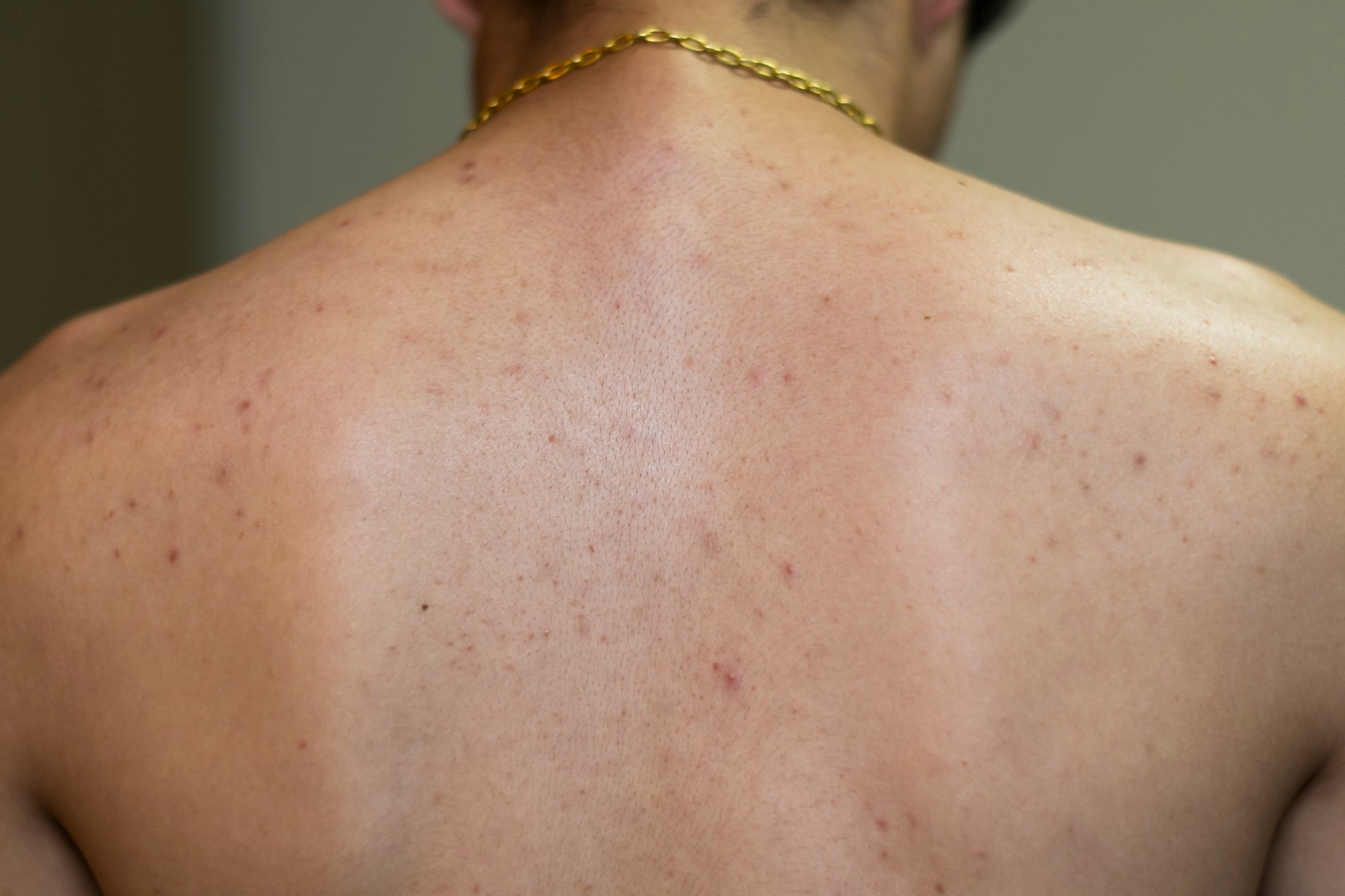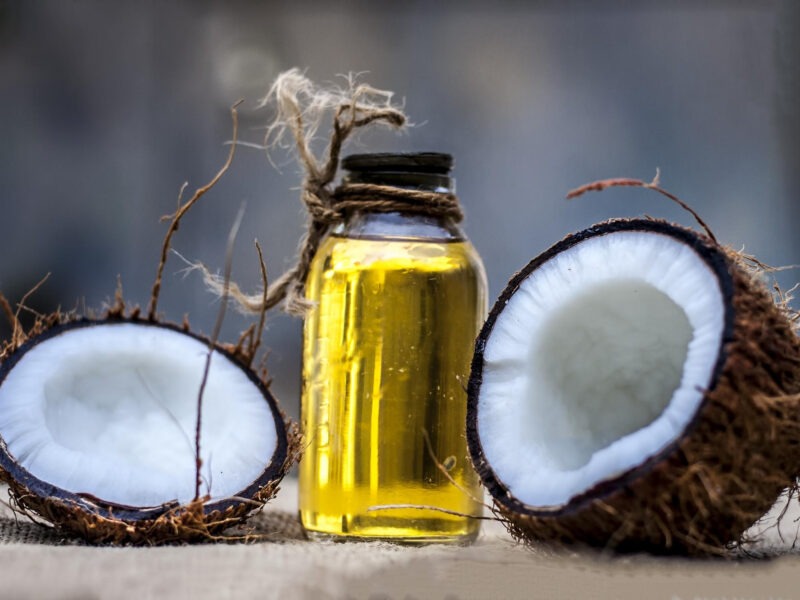Hey there! If you’ve been struggling with back acne scars, you’re not alone. These stubborn marks can be a source of frustration, especially with summer just around the corner. But don’t worry, I’ve got you covered with some tried-and-true home remedies that might just do the trick. Let’s dive in and explore how you can start saying goodbye to those pesky scars and hello to clearer skin!
Understanding Back Acne Scars
Before we jump into the remedies, let’s quickly understand what we’re dealing with. Back acne, like facial acne, can leave behind dark spots and scars. These scars occur due to the skin’s natural response to inflammation and can be hyperpigmented or texturally different from the surrounding area.
Effective Home Remedies
1. Aloe Vera – The Soothing Gel
Ah, aloe vera! This isn’t just your grandma’s go-to plant for all ailments—it’s practically a skincare superhero. Have you ever noticed how it’s a staple in so many skin care products? There’s a good reason for it. Aloe vera is like the Swiss Army knife of the plant kingdom, especially when it comes to healing and soothing your skin.
Why Aloe Vera?
First off, let’s talk about why aloe vera is a top contender in the battle against back acne scars. Its gel is packed with a cocktail of components including vitamins, minerals, antioxidants, and enzymes. These aren’t just fancy buzzwords; they are the skin-repairing troops that help calm inflammation, reduce redness, and kickstart the healing process.
Using Aloe Vera Gel
Now, using aloe vera is as easy as pie. Simply slice a leaf from an aloe plant, scoop out the gel, and apply it directly to your scars. No aloe plant? No problem! Organic, pure aloe vera gel from the store works just as well. Here’s a little tip—keep it in the fridge. Not only will it last longer, but the cool gel will also feel like heaven on your skin, especially after a hot shower.
A Personal Touch
I remember when I first used aloe vera on my skin. It was after a rather unfortunate cooking incident involving hot oil and a lack of attention—ouch! After applying aloe vera, not only did it soothe the burn, but it also helped heal the area without leaving any scars behind. Now, I swear by it for any skin irritation, especially acne scars.
Consistency Is Key
Apply the gel to your scars right before bed and let it work its magic overnight. Imagine it as a gentle, soothing lullaby for your skin. With regular use, you’ll start to notice your scars fading away, like those embarrassing memories of bad karaoke nights. But remember, consistency is key. You wouldn’t hit the gym once and expect six-pack abs, right? The same goes for aloe vera—it’s a marathon, not a sprint.
Wrap-Up
So there you have it—a simple, natural way to help reduce the appearance of back acne scars. Give it a try and who knows? Maybe aloe vera will become your new best friend. After all, it’s one plant that won’t let you down during your skin care battles! Keep it up, and soon enough, you’ll be ready to flaunt that back with confidence.
2. Apple Cider Vinegar – Nature’s Disinfectant
Let’s talk about apple cider vinegar, or as I like to call it, the liquid gold of DIY skincare. Its reputation in the kitchen is well-known, but did you know it’s also a secret weapon for your skin? Especially when it comes to those stubborn back acne scars.
The Power of Apple Cider Vinegar
Apple cider vinegar is not just great for dressing salads—it’s also a fantastic astringent. Thanks to its high acidity and the presence of alpha hydroxy acids, it can help accelerate the healing and fading of scars. It’s like a reset button for your skin, helping slough off those dead cells and bringing fresh, new ones to the surface.
How to Use It Safely
Now, before you start pouring a whole bottle of apple cider vinegar over your back, let’s talk about the right way to use this powerhouse. Always remember to dilute it with water. A simple rule of thumb is to mix it in equal parts with water. This keeps the pH levels in check and prevents any potential skin irritation—because we want to heal your skin, not host a vinegar-powered skin rebellion!
Application Tips
Using a spray bottle can be a game changer here. Just mix, spritz, and let it sit for about 10 minutes. Then, rinse it off with cool water. It’s that easy. Plus, using a spray bottle helps you reach those tricky spots on your back—unless you’re unusually flexible, in which case, you’re winning at more than just skincare!
A Friendly Warning
A word of caution: apple cider vinegar has a pretty strong smell. The first time I tried it, I didn’t anticipate the pungent aroma and almost felt like a walking salad dressing. So, maybe don’t use it right before a date or a social event. Trust me, your future self will thank you.
Consistent Use for Best Results
Like any good skincare routine, consistency is crucial. Use it regularly, and over time, you should start seeing those scars fade into the backdrop, much like your ex from high school. And isn’t that the kind of disappearing act we all appreciate?
Final Thoughts
So, why not give apple cider vinegar a shot? It’s affordable, readily available, and might just be the answer to your back acne scar woes. Who knew the secret to clearer skin might have been sitting in your kitchen all along? Now, go forth and conquer those scars with confidence.
3. Baking Soda – The Gentle Exfoliant
Now, let’s chat about one of the unsung heroes of the household—and no, it’s not your dishwasher. It’s baking soda! This humble kitchen staple does more than keep your fridge smelling fresh; it’s also a fantastic friend to your skin, especially when you’re dealing with back acne scars.
Why Baking Soda?
Baking soda, or sodium bicarbonate if we’re feeling scientific, is a natural exfoliant. What does that mean for your skin? It means gently bidding farewell to dead skin cells without the harshness of chemical scrubs. This can be a game changer for encouraging new cell growth and giving your skin a more even, smooth texture.
Creating the Perfect Scrub
Mixing up a baking soda scrub is as easy as pie—or maybe even easier! Just take a couple of tablespoons of baking soda and add just enough water to form a paste. You’re not going for a pancake batter here; think more like a thick, spreadable paste. This ensures you get enough grit to help with the exfoliation process without overdoing it.
Application Technique
Applying this paste is your chance to give your back a little TLC. Use gentle, circular motions to massage the paste onto your scars. This isn’t a race; think of it as a mini spa session. Spend a few minutes treating your skin with the care it deserves, then rinse off with cool water. It’s a refreshing finish to your skin’s mini workout.
A Personal Tip
Here’s a little anecdote from my own life. The first time I used a baking soda scrub, I was skeptical. Could something I use to clean my sink really improve my skin? But after a few tries, I started to see a difference—not overnight, but gradually. It reminded me of that old saying, “slow and steady wins the race.”
What to Expect
Don’t expect miracles from your first session. It’s like going to the gym; one day won’t make a huge difference, but stick with it, and you’ll see changes. It might take a few weeks, but you can expect a smoother, more even skin texture as those scars start to fade away, making room for fresh, new skin.
Wrap-Up
So, there you have it—a simple, natural way to help tackle those back acne scars. With baking soda, you’re not just baking cakes; you’re cooking up a new recipe for clearer skin. Keep at it, and soon your back may be smooth enough to rival your favorite silk sheets. Here’s to a smoother you!
4. Lemon Juice – The Brightening Agent
Grab a lemon—no, not for your tea, but for your skin! Lemon juice is like that bright friend who lights up a room, except it can light up your skin too. Packed with vitamin C, it’s a natural choice for anyone looking to fade scars and add a bit of glow. But, just like a zesty friend, it comes with a caution label: it’s pretty acidic.
Why Lemon Juice?
Vitamin C is the star of the show here. It’s famous for its skin brightening properties, helping to reduce the visibility of scars and even out skin tone. It’s like having a little sun in a bottle, ready to shine some light on those darker areas. But, before you go squeezing a lemon over your back, let’s talk about the right way to use this powerful citrus.
Diluting Lemon Juice
Remember, lemon juice is acidic, and your skin is like the sensitive audience at a stand-up show—it doesn’t always take well to harsh material. To keep things friendly, you’ll want to dilute the lemon juice with water. I usually go for a half-and-half mix. This way, you get all the brightening without the burning encore.
Application Made Easy
Using a cotton ball, gently dab the diluted lemon juice onto your scars. Think of it as spot painting, but you’re using nature’s bleach instead of paint. Leave the lemon juice on for about 5-10 minutes. You don’t want to overdo it and end up with a lemon-scented irritation party.
Rinse and Feel the Freshness
After those few minutes, rinse off with cool water. It’s like that refreshing feeling you get after a light spring rain—invigorating and clean. Plus, rinsing off ensures that you don’t accidentally attract bees or wasps, which, believe me, is not a fun way to add buzz to your skincare routine.
A Cautionary Tale
Let me share a quick story. A friend once decided to go full lemon—no dilution—believing that if a little is good, more must be better. Not only did she smell like a lemonade stand, but she also got a bit of a skin irritation. Lesson learned: stronger isn’t always better. It’s all about balance.
Consistency Is Your Friend
Like any good skincare routine, consistency with lemon juice treatments can lead to visible results. Don’t expect overnight miracles, but with regular use, those scars can start to fade, much like your memory of awkward first dates.
Wrap-Up
So, why not give lemon juice a try? It’s natural, readily available, and could give you that extra zest your skincare routine needs. Just remember to dilute, apply carefully, and rinse thoroughly. Here’s to a brighter, clearer you—cheers to that!
5. Tea Tree Oil – The Anti-Inflammatory Powerhouse
Let’s talk about tea tree oil, the superhero of essential oils. If tea tree oil had a LinkedIn profile, it would boast skills like “fighting acne” and “reducing scar appearance” with endorsements for its anti-inflammatory and antimicrobial properties. It’s the stuff skin care dreams are made of!
Why Tea Tree Oil?
Tea tree oil is not just another trendy skin care fad—it’s backed by science. Its antimicrobial properties make it a natural warrior against acne-causing bacteria, and its anti-inflammatory abilities help soothe your skin and reduce redness and swelling. Think of it as the cool, calm, and collected friend who knows exactly how to calm down an escalated situation.
Mixing It Right
Now, before you go pouring tea tree oil all over your back, remember this: it’s potent. You’ll want to mix a few drops with a carrier oil—like coconut oil, which in itself is a hydrator and healer. This combo not only dilutes the strength of the tea tree oil but also makes it easier to apply and adds extra moisturizing benefits. A good ratio to start with is 1 part tea tree oil to 9 parts coconut oil.
Application Tips
Using a cotton swab or your fingertips, gently dab the mixture onto your scars. This isn’t a slather-it-on situation; think of it more like spot treatment. You’re targeting those pesky scars, not going for full back coverage.
Personal Anecdote
Here’s a little story: I once had a dreadful breakout after trying a new workout supplement, and my back paid the price. On a friend’s suggestion, I tried tea tree oil mixed with jojoba oil. It was almost like watching a late-night infomercial miracle. Over a few weeks, my acne calmed down and the scars started fading. I was a convert, and my back was thankful!
Regular Use is Key
For best results, incorporate this into your nightly routine. Think of it as your skin’s nightly pep talk, soothing it and encouraging it to heal. Regular use can make a noticeable difference, reducing both the current acne and those stubborn scars.
Final Thoughts
Tea tree oil might just be the ally your skin needs. Whether you’re dealing with the aftermath of a breakout or just some stubborn scars that won’t quit, this could be your ticket to clearer, smoother skin. Plus, it’s always nice to smell a bit like a spa, right? Give it a shot—your skin might just send you a thank you note.
Lifestyle Tips to Prevent Back Acne Scars
- Keep it clean: Regularly wash your back to remove excess oils and dirt.
- Wear breathable fabrics: Opt for loose, breathable fabrics to prevent acne breakouts.
- Healthy diet: Foods rich in antioxidants can help fight the damage caused by inflammation.
Why These Remedies Work
These natural ingredients are beneficial due to their healing, exfoliating, and anti-inflammatory properties. They help manage the inflammation that leads to scarring while promoting the skin’s natural healing processes.
Conclusion
While home remedies can be effective for mild back acne scars, they require consistency and patience. Remember, it’s always best to consult with a dermatologist for severe cases. So, why not give these remedies a try? They might just help you achieve the clear, smooth skin you’re hoping for. And who knows? You might be all set to rock that new tank top sooner than you think!
Now, go ahead and empower yourself with these insights and start your journey towards healthier skin! If you’re looking for more in-depth information, don’t hesitate to dive into further research or consult a skin care expert. Happy healing!



